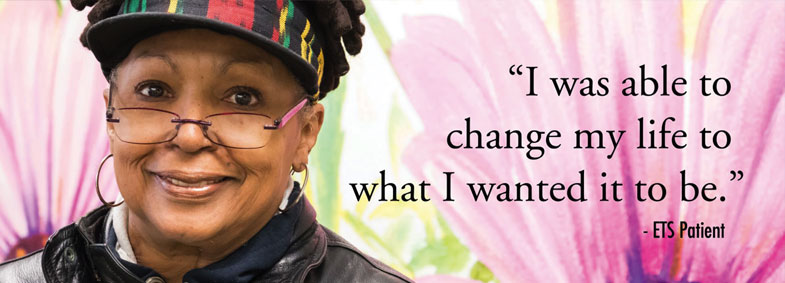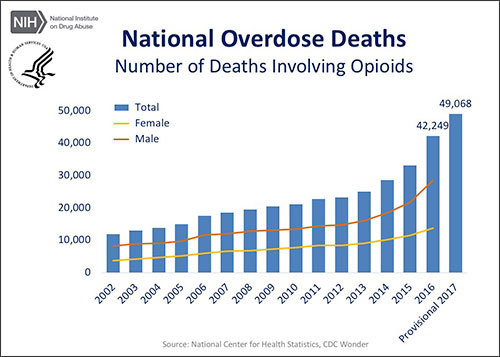About Evergreen Treatment Services
Evergreen Treatment Services is a private, 501(c)(3) nonprofit organization in the state of Washington, that has been in operation for 45 years. Providing a team of clinicians with advanced degrees in medicine, psychiatry, nursing, psychology, social work, counseling and acupuncture, ETS provides care to those in need with a combination of medication assistance, counseling, drug screening and more. In the past, ETS stations have been referred to predominantly as Methadone clinics, offering treatment programs for those using opioids or experiencing opioid disorder.
Over 11 million people misused prescription drugs, and 2.1 million people had an opioid use disorder. By offering treatment services in four different clinics in Washington, Evergreen Treatment Services (ETS) is making waves to ensure these statistics drop over the years. Specifically, in 2015, ETS began offering telemedicine services through the Flex Care program to help patients obtain Suboxone, an opioid medication.
Sara Multanen-Karr, MBAHM, CDF,
Flex Care Program Manager
Let’s take a closer look at ETS’ Flex Care program, how telemedicine has impacted the way opioid care is delivered and how their organization is helping individuals in rural communities:
In 2017, the U.S. Department of Health and Human Services declared a public health emergency due to the opioid epidemic. In 2016 alone, 116 people died every day from opioid-related overdoses.
Understanding Flex Care
Flex Care is a program that provides treatment to patients dealing with opioid use disorders. A critical component to the treatment is the administration of Suboxone, a medication that can be prescribed to help suppress symptoms of opioid withdrawal, decrease cravings for opioids, reduce illicit opioid use, block the effects of other opioids and help patients stay in treatment, according to The National Alliance of Advocates for Buprenorphine Treatment.
The Flex Care program pairs with the Opioid Treatment Program to ensure patients receive the proper care options in a time of need. Some of the treatment services include obtaining an ongoing Suboxone prescription, engaging in high- or low-intensity counseling services, administering urine drug screenings, and transitioning to other opioid-disorder medications if necessary.
Challenges
Obtaining doctors to administer Suboxone isn’t as simple as it sounds. For patients to use this medication, ETS must have specific doctors on standby who can prescribe it. “In order to prescribe this medicine, the doctors have to have a special buprenorphine waiver, which most MDs do not have,” according to Jennifer Sherman, the Lead Nurse Care Manager for the program at the Olympia facility. So trying to find one that is available to support our treatment programs at each of the local clinics wasn’t happening.
Additionally the programs’ success depends on the willingness of the trained provider to spend the time to mentor their patients along their treatment path. Doctors are also limited to treating only 30 patients at a time with Suboxone, the first year. All of these barriers seriously limited the number of patients ETS was able to treat.
Telemedicine strengthens care delivery model Solution
Instead of opting out of offering Suboxone, the ETS team decided to take a different approach. Implementing telemedicine services into their practice has allowed the team at ETS to offer prescription-based opioid treatment by remote certified doctors.
Utilizing AMD’s AGNES Interactive encounter management software, patients in the ETS clinics connect with a remote doctor via video conferencing who can prescribe the Suboxone medication and supervise their treatment.
Currently, ETS is helping 140 patients in the Grays Harbor clinic and 116 patients at the Southbound clinic. They average around 60 patients per week that without telehealth, they would not be able to provide consistent treatment for. “We have not only treated our existing patient base better by embracing telemedicine services, but the organization has increased the number of patients we can service as well,” stated Dr. James Darnton, an internal medicine practitioner at ETS.
How does treatment with telemedicine work?
When opioid patients come to an ETS clinic, they are first admitted and monitored before they get a Suboxone prescription, according to Andrews, Program Manager for ETS.
“In the beginning, they’re seen in the clinic weekly for four weeks,” Andrews shared. “If they are stable with only Suboxone, then they will go to every other week for two months and after the 90-day period they’re eligible if they continue to stabilize at one visit to the clinic per month.”
Most of the clinic visits are with onsite nurses and clinicians, who assist with the telemedicine video consultation between the patient and the remote doctor. If needed, the onsite nurse also has the capability to take the patient’s vitals and images to share in real-time with the remote doctor. Darnton explained that each clinic spends about 8 to 10 hours each week dedicated to telehealth visits, seeing two to four patients every hour.
Each clinic spends about 8 to 10 hours each week dedicated to telehealth visits, seeing two to four patients every hour.
“We have not only treated our existing patient base better by embracing telemedicine services, but the organization has increased the number of patients we can service as well.”
Dr. James Darnton,
Internal Medicine Practitioner Evergreen Treatment
Telemedicine success
Patients living in rural communities are especially benefiting from the telemedicine services, according to Darnton.
“The model of the Methadone clinic where people have to come in every day, that just doesn’t work if there’s no Methadone clinics in your county or if you live in a rural area,” he said. “This model, where the patient can come to a clinic weekly and eventually as little as once a month and take the medication on their own, but still be monitored and supported is really the best way to go for people in more rural areas.”
The video conference option on AMD’s AGNES Interactive has been the most utilized and helpful source of telemedicine for ETS.
“We use the video conference function to have conversations with the patient to see how they’re doing with the medication and how they’re progressing with their recovery,” said Darnton.”
Before telemedicine, the ETS team agreed that they were restricted in terms of how they could deliver care for patients. Specifically, it’s increased the number of patients they can treat at a time – about 250 patients are largely served by telemedicine, a number ETS wouldn’t be able to reach without the help from AMD’s telemedicine technology.
Overall, ETS is gracious for the opportunity that telemedicine solutions has provided. The increased access to care has helped the team assist more people in the most convenient way possible. Currently their patient population has been growing by about 10 patients every month.
“Most of our patients have a lot of barriers to seeking treatment, and if you add travel time, it would be unsurmountable for many patients,” shared Andrews.
With the help from AMD Global Telemedicine, ETS has made successful moves to assist opioid addicts in taking back control of their lives through providing video conferencing services and enabling access to buprenorphine prescribers.
> Learn more during our on-demand webinar.
Whatch this video to learn more about their Flex Care program







